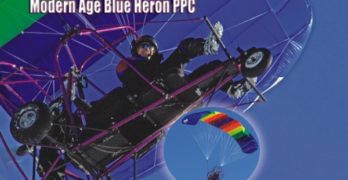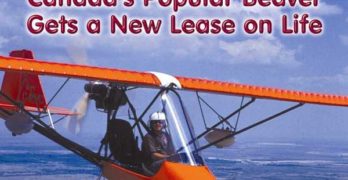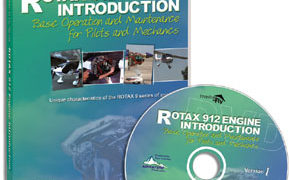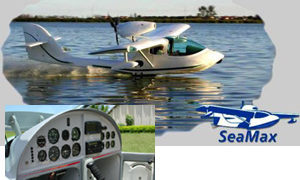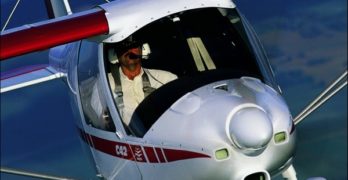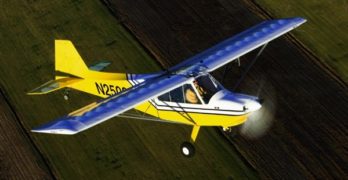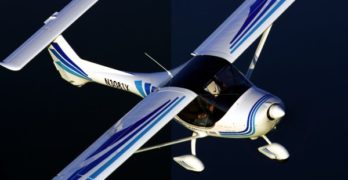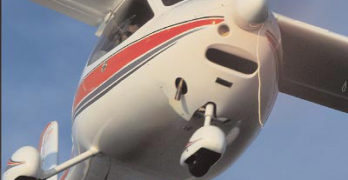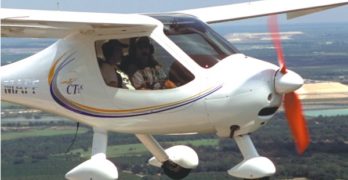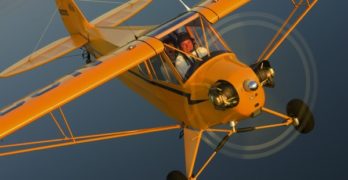Here we are
in the spring of 2006 wondering about the future of ultralights in an age seemingly gone crazy about Sport Pilot/Light-Sport Aircraft (SP/LSA). For powered parachute manufacturer Heldeberg Designs, the answer is easy. They’ve been preparing for the LSA program for a long time. How will they fare?
Today, we have a great divide* between ultralight pilots on one side and LSA enthusiasts on the other. The ultralight pilots see rather modest benefit to becoming Sport Pilots flying ultralights converted to Experimental Light-Sport Aircraft (ELSA). One major downside is that most such aircraft will have to settle a sales tax bill (states become aware of the aircraft when owners obtain their N-numbers). Other limitations include not flying over 10,000 feet or being required to perform an annual condition inspection. And this is by no means a complete gripes list.
The LSA contingent responds, “That ship has sailed. SP/LSA is here.
Search Results for : electric
Not finding exactly what you expected? Try our advanced search option.
Select a manufacturer to go straight to all our content about that manufacturer.
Select an aircraft model to go straight to all our content about that model.
Beaver RX-550
Perhaps the most famous ultralight to come out of Canada is the Beaver. With a reported 2,200 units flying since the early 1980s, this is one of the most successful light aircraft ever. However, due to missteps by companies that previously manufactured the brand, this popular ultralight was nearly lost from the ultralight aviation landscape. Were it not for the Aircraft Sales and Parts (ASAP) company and the Holomis family, you might not have this choice today.
Originally the Beaver RX-550 came from a company called Spectrum Aircraft. A company reorganization left the ultralight in the hands of a company named Beaver RX Enterprises. Both these business names disappeared and today the ASAP brand carries the Beaver into the sky.
In 1993, a couple years after our last report on the Beaver1, the old company closed its doors and effectively stranded thousands of Beaver ultralight owners and all the dealerships that sold them.
Fascinated with the Rotax 912? Learn More at Home.
At airshows or other gatherings, I’m always amazed at how many pilots attend talks on engines like the Rotax 912. For those who thirst for more, here’s the newest DVD from ASA‘s Freedom to Fly video series on the operation and maintenance of a Rotax 912. ASA’s program covers a wide range from checking the oil to reviews of the electrical system or carburetor synchronization to cold weather techniques. Learning the right methods can prolong engine life and reduce maintenance costs. The video production features a talented group composed of ASA’s Sport Pilot expert Paul Hamilton with Phil Lockwood of Lockwood Aviation and Dean Vogel from the Aero Technical Institute. “This DVD is particularly useful to maintenance professionals, pilots, and flight instructors operating Rotax-powered Light-Sport Aircraft,” said Hamilton. He reports the program is the only one of its kind. The DVD, $49.95, runs 68 minutes and includes 17 minutes of bonus features plus a booklet with quick reference checklists.
Unveiling SeaMax to American Amphib Fans
My old friend Malcolm Jones* and Carlos Bessa will unveil a lovely amphibian LSA called SeaMax at the Sebring LSA Expo starting tomorrow. SeaMax by Brazilian producer AirMax intends to achieve Special Light-Sport Aircraft status but it has been cutting through waves in other countries for several years. SeaMax is a lighter amphibian, with gross weight at 1,144 pounds (a max of 1,430 is allowed). At 660 pounds empty, the composite seaplane yields a 484 pound useful load and can carry up to 25 gallons of fuel. SeaMax can lift off the water in only 325 feet. Electrically operated landing gear can be lowered into the water for taxiing onto a beach. SeaMax has a broad 46-inch wide cockpit and lots of attention to detail has been paid to the speedboat-like interior finish. * Malcolm operates a favorite hang gliding airpark called Wallaby Ranch just eight miles south of Disney Florida.
C42…An Ideal Light-Sport Aircraft Trainer?
Germany’s most popular microlight flies to America
Some readers and enthusiasts are excited about the proposed sport pilot/light-sport aircraft rule, while others have taken a wait-and-see approach. Virtually all recreational pilots are full of anticipation and questions. In the meantime, aircraft developers are also preparing.
Of those aircraft likely to become new ready-to-fly light-sport aircraft (LSA), many hail from Europe because its microlight regulations are close to the expected definition of LSAs in the United States. Germany is home to many manufacturers that produce potential LSAs, including Comco Ikarus, makers of the C42 Ikarus. The company has produced more than 1,500 aircraft, of which more than 650 are the C42 model. It’s an aircraft that both general aviation and microlight pilots appreciate, noted by the fact that it is Germany’s best-selling microlight. Every year, the factory cranks out another 80 C42s.
The design was first produced in 1996. Rather than follow the design of the company’s older C22, which looks like a Flightstar II SL in its Fastback version, the C42 started fresh.
Proven again: Rans’ newly approved S-7LS
You’ve probably heard the tongue-in-cheek expression, “No good deed goes unpunished.”
RANS President Randy Schiitter knows this saying in a way no other light-sport aircraft
(LSA) producer can. When the company’s S-7 Courier earned special light-sport aircraft
(S-LSA) approval on October 24, 2005, it was the second time this aircraft
was certificated as a ready-to-fly (RTF) airplane, after first being designed as a kit.
RANS earned Primary Category certification
for this aircraft, as the S-7C
model, 10 years ago when that FAA regulation
was the latest big thing in aviation.
It took the Kansas company years
to complete that certification process,
but the recreational pilot certificate and
Primary Category certification failed
to meet industry expectations. After
spending lots of time and money earning
that approval, RANS didn’t jump
on the LSA bandwagon immediately.
The S-7 Courier was the first twoseat
aircraft produced by RANS, dating
to 1985 when the first prototype flew.
A Winner Among LSA (Allegro)
The Allegro is the value leader among LSA designs.
One year ago, the fi rst special light-sport aircraft
(S-LSA) were approved and delivery of S-LSA began.
A few brands stand above the rest in the number of
aircraft delivered. One of those is the Allegro 2000, imported into
the United States from the Czech Republic by Fantasy Air USA. Since May 19, 2005,
when the Allegro earned S-LSA approval, Fantasy Air has delivered more than 40 aircraft,
keeping owners Doug and Betty Hempstead busy.
One of the appealing factors of the Allegro 2000 is its price, which starts in the upper
$50,000 range for the flyaway version. An airplane with an attractive price has a clear
advantage over others with higher price tags. When that airplane flies well, is supported
well, and has the equipment desired by consumers, it’s likely to succeed.
Well-Established
Given its fast start, Fantasy Air USA
has reason for optimism, but the
Allegro design has a much longer
history outside this country.
Flight Design CT2K
A Bold Yet Efficient Euro-Designed Light-Sport Aircraft
Flightstar imports the CT2K in anticipation of the light-sport aircraft rule.
As FAA’s proposed light-sport aircraft
rule looms ever closer, one
of the first aircraft that will likely
fit the field and be recognized by American
pilots is Germany’s CT. For the U.S.
market, and with a nod to the new millennium,
producer Flight Designs has
renamed the model as the CT2K.
“CT” stands for Composite Twoseater.
It is certainly not alone in being
“white, glass, and built overseas,” a
theme that emerged at EAA AirVenture
Oshkosh 2002. But the design was a
leader in the move from tube-and-rag
ultralights to the modern microlights of
Europe. And it distinguishes itself in a
number of ways that we’ll explore in
this review.
My experiences flying the CT on two
occasions were both with Europeanbased
check pilots. The most recent
opportunity was with Allistair Wilson,
formerly a major with the Royal Irish
Regiment in Northern Ireland.
Composite Two-seater (CT)
In the fall of ’01, I wrote in Ultralight Flying!, “The CT is the tip of an iceberg, in my opinion.” When I flew that first CT in the USA, few Yankees had seen the aircraft. I felt the German design represented the beginning of a flow of European aircraft coming to America. What a difference a couple of years make!
Thanks to adept and steady promotion, Americans may best identify the coming breed of proposed Light-Sport Aircraft by pointing to the Flight Design CT2K. While this means no disrespect to trikes, tube-and-rag ultralights, or powered parachutes, the CT’s unusual, smoothly-contoured shape is now well known to many Americans. Though the brand is fabricated in the Ukraine and assembled in Germany, it crosses the Atlantic as a prototypical candidate for FAA’s proposed Light-Sport Aircraft category.
Rollison Light Sport Aircraft imported the first U.S.-based CT I flew. The design is now brought in by Flightstar Sportplanes and HPower HKS engine honcho Tom Peghiny.
Flying the American Legend Cub
Familiar…Yellow…Tandem…FUN!
Many light-sport aircraft
(LSA) aspire to a
futuristic look, using
exotic materials like
carbon fiber with
shapes that are sleek and finely contoured.
Other designers chose another
niche. American Legend Aircraft
Company of Sulphur Springs, Texas, is
one of three companies that have recreated
the venerable Piper Cub, which
has so captured the imagination of the
general public that the words “Piper
Cub” are used by the unknowing to
describe almost any airplane without a
jet engine.
Pilots know better. Yet among the
immense range of aircraft available,
the Piper Cub maintains a favorable,
nostalgic image. Doesn’t every pilot
have a warm, fuzzy feeling for the little
yellow tandem-seater? Three companies
now target this interest under
the new LSA category. (We’re featuring the Legend Cub
but will describe
the other two-the
North American Sport
Aviation Savage and Cub
Crafters’ Sport Cub-in
sidebars.)
American Legend’s Cub
was the first of the three to earn special
light-sport aircraft (S-LSA) certification
under the ASTM consensus standards.
- « Previous Page
- 1
- …
- 52
- 53
- 54
- 55
- 56
- …
- 67
- Next Page »


